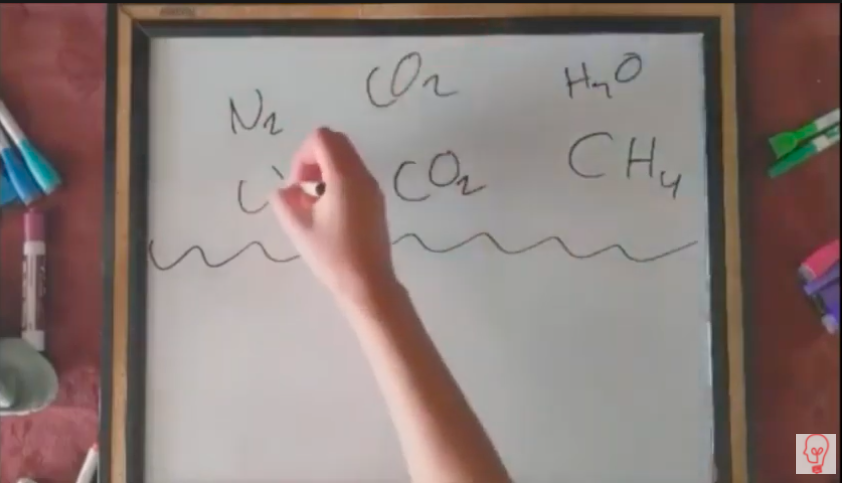Hello, my name is Jenen Kur and today I'll be presenting my research project for meteorology on how the earth got its oxygen. I hope you enjoy
Scientists refer to this event as the great oxygenation event or the GOE. And with that... I present to you Earth's oxygen story. Initially, the earth did not have free oxygen, and this is because of oxygen's chemistry, it tends to react easily and quite willingly with other elements.
So that what little we did quickly reacted to become something else. Our planet could only accumulate oxygen. If there was more that was put into our system than taken out, but this wasn't that easy for the first 1.5 billion years of Earth's history, it was being bombarded by space debris at a very constant rate, creating a violent and unwelcoming environment for any type of life to form.
When the bombardment slowed earth breached, it had its habitable boundary, which allowed early life forms to thrive conditions. 3.5 billion years ago was very different with no oxygen on our planet.

Our atmosphere did not have an ozone layer making it uninhabitable for life. Our atmosphere consisted of nitrogen water, vapor, carbon dioxide, and methane giving our sky an orange color. And our oceans were full of iron Silicon hydroxide, sulfur, and even pouring causing our oceans to be green.
Instead of blue diving down into our deep green seas, 3.8 billion years ago, the anaerobic conditions led to the first signs of life on earth in the form of microbes. Then a little bit after we get the star of our show photosynthesizers so our first photosynthesizing bacteria Ciano bacteria showed up as early as 3.5 billion years ago, created some ly, and began producing oxygen as waste in the shallow seas around 2.5 billion years ago.
This far air oxygen began to accumulate in the oceans reacting with iron and other compounds present and creating layers of rust that settled at the bottom of the oceans to create our banded iron formations.
These are present around the world on various continental shelves, but they're the thickest and most extensive in Australia holding up to 300 trillion, tons of iron, but the layers that make up the banded iron formations are representative of our planet's biosphere, taking its first breaths of oxygen billions of years ago, after this, the ocean rested for 700 million years and also caused the first mass extinction of anaerobic microbes that once thrived in the oxygen-free oceans, but eventually, the O oxygen reacted with all it could in the oceans.
It started to enter the atmosphere with oxygen entering the atmosphere. Our planet started to change drastically at the time our son was younger and 30% weaker than it was today. So it was our greenhouse gases, carbon dioxide, and methane that kept our planet warm. However, the oxygen reacted with ch four and CO2 and eventually decreased their concentration so much that the Earth's temperature started to decrease as well, which threw our planet into our very first ice age.
Global radiation began around 2.4 years ago. And while there were several possible events that occurred, the longest one was called the Heronian glaciation which lasted for 300 million years. These extended global glaciations and the reduced carbon dioxide put a strain on the life present and even caused another major extinction about were 90% of life forms when extinct, but eventually, greenhouse gas accumulated through this glacier throughout the glaciation. And once again began to warm the oxidized planet, bringing her out of her first ice age 2.1 billion years ago.
But during this ice age life under the ocean that did manage to survive, began to evolve into more complex multicellular organ organisms. This is because more oxygen allowed for more complex life to form and eventually led to multicellular life. But there was another big change to oxygen brought on after the first age our planet formed something crucial for life to survive on the earth's surface.
Our ozone layer ozone is made of oh three is very important because it acts as our planet's sunscreen and blocks harmful UV rays from entering our planet and allows the surface of the earth to be much more inhabitable for all types of life. So the planet's surface is habitable and oxygen levels are increasing and life is evolving under the ocean, but things weren't really that exciting just yet.
After the creation of our ozone and the end of our ice age, the planet became relatively stable, biologically and climatically. So stable. In fact that scientists often refer to this timeframe as the born billion, but depending on your field of science, it wasn't that boring. The planet was created. The planet was busy creating land. It formed its system of plate tectonics sprouted on by sea force, sweating and subduction, and farmed Earth's supercontinent.
This was awesome. Life was complex and land was present and everything was looking great for the planet until the sun began to dim and chemical weathering pulled out CO2 from the atmosphere again, causing the earth to be thrown into its most intense snowball event.
The Cryogenian ice age was our most intense ice age sheets of ice formed at our poles and increased our AEDO and brought temperatures down even more. In fact, this was the coldest our planet has ever been. There were two separate snowball events during this timeframe. Each lasting about 20 million years is the cert ice age, which began 700 million years ago.
And the Morian or Vagner ice age started 660 million years ago. But how did these conditions end? Our planet's surface was frozen from the pools to the equator, but beneath the frozen surface, our oceans were active. The life that survived was busy and evolving and pipe tectonics were changing the shape of the earth as well.
Volcanoes were busy erupting until eventually there was enough greenhouse gas to begin to warm the planet and break it out of its ice age. Thus 630 million years ago the Cryogenian ended and more complex life forms were able to evolve with the changing environmental conditions. A species started to sexually reproduce, which allowed for greater, greater diversity in life forms.
But what about oxygen as the earth left its ice age period, oxygen levels finally rose enough to support these diverse life forms of the OCN period, which lasted from 635 to 541 million years ago, causing what is known as the Avalon explosion.
This was important because Avalon's explosion paved the way for the better non-Canon explosion, which is what most of her life forms we see today. Evolved. Thank you so much for listening to my presentation. I do hope you enjoy it.






